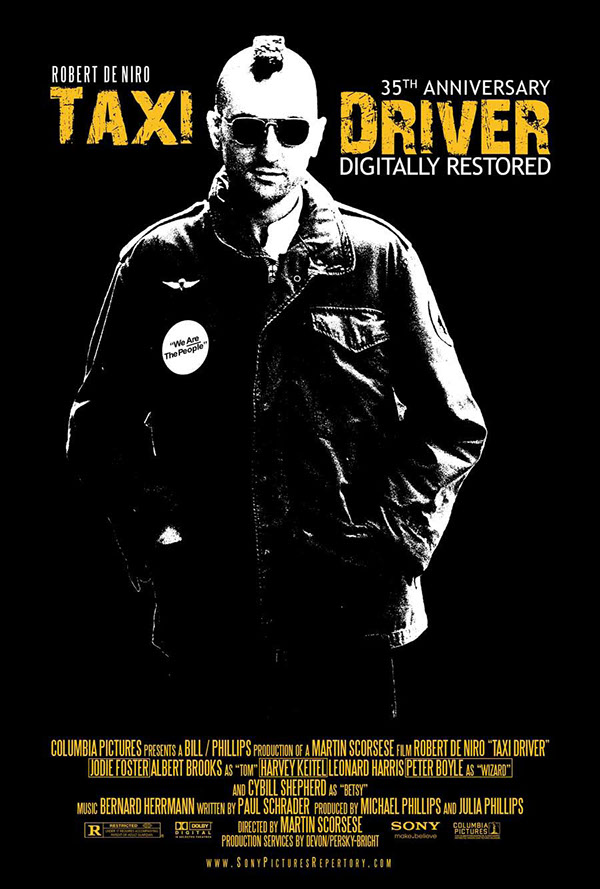Indepth
Taxi Driver

Editing
The film ‘Taxi Driver’ used editing to add mystery. The beginning scene starts with text that is written in a bright yellow font, which correspond to the taxi sign itself. At the start when the taxi appears through fog, which gets the audience’s attention straight away as it is not expected.They also mix up into including a slight shadow, which represents when the taxi light is on offering to pick up customers. This mysterious taxi adds speculation as it does not seem like a normal taxi. However, this is a very good use of the technique as it allows the audience to relate to real life situations. This is because most people do not pay attention to where the taxi comes from, it seems to 'just appear'.
Sound
Sound is used to build tension and mystery. Non-diagetic sounds do this because the audience do not know where the sounds are coming from. Different moods of music represent the taxi driver’s mood throughout his work shift as it is as easy to be in a happy mood or a more serious, sinister one, either due to troublesome passengers or a lack of energy from tiredness. These two moods are very relate-able to daily work whether it is a desk job or not, people experience these emotions in a real-life environment.
Mise-en-scene
Mise-en-scene can be broken into 5 categories (Setting, Costumes, Actors, Lighting and Props). In the beginning scenes there a 3 places which introduce the setting. Inside the taxi with the driver, driving in a deserted alleyway and driving down a crowded city street with the bright lights attracting waves of customers. These 3 areas also symbolize what it is like for a taxi driver, going from one extremes to regular areas. It also shows that it is set in a urban environment where taxis drivers mostly work at.
The costume can’t really be noticed by the audience as it is only a close up of the driver’s face which we see, the taxi drivers in reality are usually seen as working class. This is because their work depends on the amount of people they serve. The only actor which the audience can see is the taxi driver himself. Although it is only a close up of his face we can instantly get a sense of loneliness alongside a chilling side which represents fear and an untold story which keeps the audience engaged with the hope of finding out more later on.Lighting plays a huge part in introducing the film and its opening sequence to the audience. The merging of gloomy darkness mixed with bright city lights creates a contrast .The only prop used in the opening sequence is the actual taxi itself. Even though it seems like such an obvious insignificance, it is actually one of the most important as it helps introduce the film and its meaning, plus setting the audience in familiar scenery allowing them to feel comfortable when viewing.
Camera
Finally, camera is possibly the most important as it is what allows the audience to actually see what is going on. There is a range of camera shots used, for instance the tracking shot which follows the taxi driving through the fog. This is one of the most significant shots as it introduces the taxi to the film and gets the audience prepared. The use of low angles makes the taxi seem superior, giving it a sense of importance and the feeling that it must be respected.The long shot is put to use when showing the setting to the audience, especially when focusing on the hectic surroundings of the city night life and what the driver has to go through day in day out.

Comments
Post a Comment